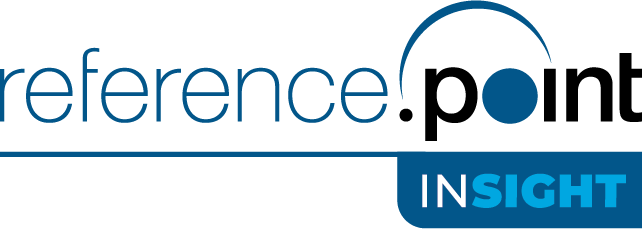
Pulling back the curtain on mortgage technology: A behind the scenes look at how transformation is impacting the industry
August 2022
Straight To The Point
Theatregoers attending a Broadway production are often captivated by the experience. They hear the music, take in the scenes, and watch the actors as they transport them to a different place and time. But it’s what happening behind the scenes that carries the show. The lights, the orchestra, the make-up artists, and props all work in sync to ensure the customers have an incredible experience.
Customer experiences in the mortgage world are not dissimilar. The evolution of mortgage technology has monumentally changed how originators and consumers interact during the loan process. In many cases, consumers can now track the progress of their loans, more easily upload documentation and even e-sign documents that had to be printed, and scanned in the past. This enables a significantly better, more efficient customer experience. But, when you look beyond the curtain, the technology transformations happening behind the scenes are even more impactful. Organizations wrestle with how they manage new technology and how IT teams need to quickly adapt to changes around how both internal and external clients are served.
Many of us grew up in a mortgage industry that was characterized by one big technology decision. The team spent months or even years to choose a vendor partner who claimed they had an “out of the box” solution that you could just plug in! Once purchased, there were tireless efforts to implement and ultimately customize the system to meet the organization’s needs. These efforts often were spectacular failures. After the system was finally implemented, the change management process was clunky and inefficient due to hard coding and limited IT resources. Although these systems were cumbersome and didn’t deliver cutting edge processes, robust reporting, or a seamless consumer experience, it did provide one significant benefit. With one primary system controlled by IT, the system had a level of control related to process, data, and documentation.
Fast forward to today and the technology could not be more different. With a variety of vendor partners and FinTechs who can deliver a very robust, but specific function, an IT team finds themselves managing an array of systems that have varying levels of technical and user coding requirements. And in many cases, they still must plug into the legacy system discussed above! Now, the challenge is to respond to rapid changes in a market and adopt technology (blend of Software-as-a-Service and on-premises) that reduces friction for the consumer, eases burdens for the origination staff, and still produces a compliant loan. With the number of system components that have been added to the process and amount of consumer information that is readily available, the industry has new hurdles to address before its production is ready for opening night:
- Harness data and information from several systems to create meaningful management and operational reports.
- Create a seamless process for the customer with a patchwork of systems they flow through during the process.
- Manage and maintain accurate and up-to-date documentation on the system architecture and the data flow to allow for a fluid workforce and rapid changes.
- Protect the organization from cyber threats across proprietary and vendor systems.
- Support heterogeneity and interoperability of technical and data diversity.
Every day, new entrants to the FinTech space emerge looking to disrupt the mortgage industry; lenders need a vision and direction that embraces heterogeneity but does not waste time on distractions. Key considerations include:
The Customer
Realize that customers expect their profile is already well-known and therefore they don’t want to spend a lot of time providing documentation or understanding individual processes. Similar to an Amazon Marketplace experience, consumers expect most things to happen with 1 or 2 clicks. As such:
- Customer data needs to draw upon all sources including various FinTech relationships to minimize the documentation that the customer has to manually provide. Manual processes are frustrating for the customer, creates a dependency, and slows the process.
- Customers need to be informed on status without calling. For instance, think about Domino’s pizza app. If customers feel they need to know the status of their pizza, they certainly want to know the status of their mortgage!
- Customers need transparency on the experience specific to their circumstances. Every transaction is different.
- Customers need to interact the way they want to interact.
- Most importantly, business-to-business and your internal sales team may be your most important customers and they are seeking the same functionality as the end customer; robust data that can be leveraged to reduce paper gathering, an intuitive system interface and transparency into their transaction that can reduce endless phone tag with the operations team. This can be the key to recruiting and retaining the top industry talent!
The Team Members
Expect that to retain the best employees they must be able to grow their careers through stages of life without changing companies. To do so, consider:
- Technology should help with knowledge management to minimize the impact of seasoned employees leaving the workforce.
- Technology needs to accommodate a hybrid work environment to provide retention options.
- Technology and people need to work effectively; skills based routing and intelligent workflow are a must.
- Systems need to be intuitive to reduce onboarding time for team members without compromising quality.
- Use of robotic process automation to remove work that employees don’t enjoy will reduce cost and allow more extended hours of operation.
The Management Teams
Reporting that allows for management oversight of productivity, pipeline, and other KPI’s has always been essential to manage the business, but with the shift to work from home, it is more important than ever to have robust reporting that allows for quick identification of what’s working and what may not be!
- Management reporting needs to integrate relevant data from various tools to create a holistic and meaningful measure of performance with the ability to drill down to functional team and individual performance.
- Systems should provide sufficient controls and workflow rules that allow managers to focus on managing speed, service, and quality vs. manually assigning loans and managing exception reports.
- Managers need organizational elasticity to enable scalability based on market trends.
The Bottom Line
Accept that competitive pressure to reduce costs will always continue and even accelerate. Accept that the costs of loan origination must decline even under increased regulatory and risk management pressures. Accept that the market will not cease to demand that technology be able to change rapidly as better components appear. Accept that some of the innovations you develop may become market standards but in most cases you will not be able to predict the market or drive necessary change yourself. Therefore, you must be able to constantly accept change developed by other market players.
- System changes to integrate technology costs money and time, IT resources are usually more scarce than money. It is critical to ensure these new capabilities deliver the yield expected.
- Technology teams need to both support the old technology and processes and develop new technology and processes (to be bimodal) and enable new capabilities in a pilot model before expending time and effort to build a full enterprise capability.
- We have learned from mobile phones to expect that if someone has a better app, there is a need to be able to quickly go get it and implement it without major disruption.
- Invest in design and build of architectures, which have, as a primary design criterion, the ability to rapidly accept change.
- Workflow is a forgotten gem which enables a seamless consumer experience without exposure to the complexity of the backend application.
- Use capability-oriented architectures to facilitate plug-and-play and allow the company to rapidly integrate new data sources or applications.
Conclusion
Unlike a Broadway production, the mortgage industry does not have the luxury of practice before the curtain rises for customers. It must evolve while the orchestra is playing. Building an efficient, modern workflow to save time, close loans faster, and boost borrower satisfaction won’t be easy, but those that focus on the issues today will be better positioned to rollout the red carpet for their customers and sell out their seats tomorrow!
Meet our Housing Finance Experts
Vicki Bott
As Director, Reference Point Housing Finance Vicki has extensive leadership experience across the financial services industry. During her 35-year mortgage-banking tenure, she held the following positions:
- EVP, Regulatory Compliance and Operational Risk at Guaranteed Rate (Stearns Lending)
- Credit Strategy SVP of Wells Fargo home Lending
- National Sales Support and Strategy Wholesale SVP at Wells Fargo Home Lending
- Deputy Assistant Secretary/Single Family of Housing and Urban Development (HUD)
Bill Beckmann

Senior Advisor to Reference Point – Housing Finance
Bill has 40 years of experience in financial services focused primarily on mortgage banking operations and technology. Previous roles include:
- Senior Advisor at Housing and Urban Development (HUD)
- Director and Committee Chair of non-profit, for-profit, and loan fund boards at Enterprise Community Partners
- CEO of Merscorp Holdings, Inc.
- CEO of CitiMortgage, Inc.
- CEO of The Student Loan Corp
Jon Baymiller

Engagement MD and Mortgage Operations Expert
Jon has 35+ years of experience in the residential mortgage industry. Previous roles include:
- President & CEO of New York Community Bank Mortgage Banking
- Advisory Board Member of Union Home Mortgage, Inc.
- Executive Vice President at AmTrust Bank
- Executive Vice President at CitiMortgage
- Executive Vice President and COO of Principal Residential Mortgage
Mike McPartland
 Engagement MD and Private Banking Mortgage Expert
Engagement MD and Private Banking Mortgage Expert
Mike has 30+ years of experience in financial services with extensive experience leading teams in mergers and transformation initiatives across organizations. Previous roles include:
- Managing Director at Citigroup
- Global Head of Residential Real Estate Lending
- North America Head, PB Lending
- US PB Fair Lending Officer
- Managing Director at JPMorgan Chase
- US Residential Mortgage Product Head, PB and WM
Dave Stadler

Engagement MD and Mortgage Technology Expert
Dave has over 40 years of experience in Financial Services with a broad background in operations and technology across financial services. Previous positions include:
- Mortgage CIO experience at Freddie Mac and GMAC/ResCap/Ally
- ~20 years at Accenture as a partner focused primarily on mortgage banking and technology
Dave Stevens

Senior Advisor to Reference Point – Housing Finance
Dave is a 38-year veteran of Mortgage Banking. He has led a variety of teams both in the industry and in Washington. Previous roles include:
- President and CEO of MBA
- U.S. Asst. Secretary of Housing, Fed Housing Commissioner at HUD
- President and COO of Long & Foster Real Companies, Inc.
- Head of Single Family at Freddie Mac
- Head of Wholesale Lending at Wells Fargo
Table of Contents
About Reference Point
Reference Point is a strategy, management, and technology consulting firm focused on delivering impactful solutions for the financial services industry. We combine proven experience and practical experience in a unique consulting model to give clients superior quality and superior value. Our engagements are led by former industry executives, supported by top-tier consultants. We partner with our clients to assess challenges and opportunities, create practical strategies, and implement new solutions to drive measurable value for them and their organizations.
